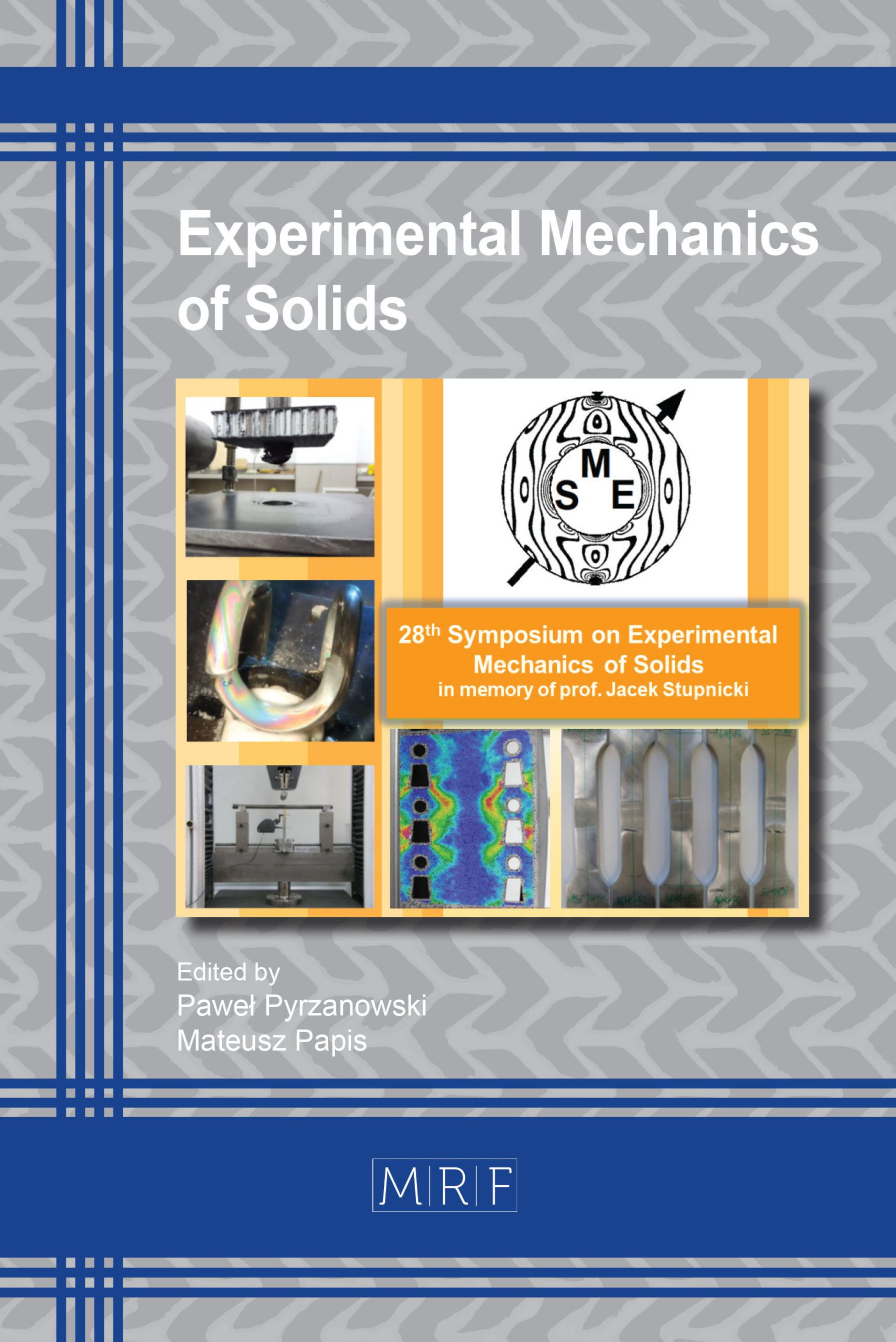Modeling of Neck Effect in Cylindrical Shell
Adam Piwowarczyk, Artur Ganczarski
download PDFAbstract. This work presents two models of a neck effect appearing in a cylindrical shell. In the first case, an elastic deformation is described by the conventional shell equation in which axial force appears as an external loading. In the second case, an elastic-plastic deformation including damage effect is described by the kinetic theory of damage evolution implemented to FEM code. Results obtained from both models confirm existence of a distinct displacement, stress and damage localization in the cylindrical shell free from any geometrical or material imperfections.
Keywords
Neck Effect, Cylindrical Shell, Low Cycle Fatigue
Published online 5/25/2019, 6 pages
Copyright © 2019 by the author(s)
Published under license by Materials Research Forum LLC., Millersville PA, USA
Citation: Adam Piwowarczyk, Artur Ganczarski, Modeling of Neck Effect in Cylindrical Shell, Materials Research Proceedings, Vol. 12, pp 84-89, 2019
DOI: https://doi.org/10.21741/9781644900215-12
The article was published as article 12 of the book Experimental Mechanics of Solids
![]() Content from this work may be used under the terms of the Creative Commons Attribution 3.0 licence. Any further distribution of this work must maintain attribution to the author(s) and the title of the work, journal citation and DOI.
Content from this work may be used under the terms of the Creative Commons Attribution 3.0 licence. Any further distribution of this work must maintain attribution to the author(s) and the title of the work, journal citation and DOI.
References
[1] P.W. Bridgman, The stress distribution at the neck of a tension specimen, Trans. ASME, 32 (1944) 533-574.
[2] C.R. Cowper, E.T. Onat, The initiation of necking and buckling in plane plastic flow, Proc. 4th U.S. Nat. Congr. Appl. Mech. (1962) 1023-1029.
[3] N.N. Davidenkov, N.E. Spiridonova, Analysis of stress state in the neck of tensile specimen, Zavodska Laboratoria, Vol. XI, No. 6 (1945) (in Russian).
[4] A. Ganczarski, J. Skrzypek, Plasticity of engineering materials, Cracow University of Technology Publ. House, Kraków, 2007 (in Polish).
[5] J. Lemaite, J.-L. Chaboche, Méchanique des matériaux solides, Bordas, Paris, 1985.
[6] N.N. Malinin, J. Rżysko, Mechanics of materials, PWN, Warsaw, 1981 (in Polish).
[7] D.R.J. Owen, E. Hinton, Finite elements in plasticity: Theory and Practice, Pineridge Press Ltd., Swansea, 1980.
[8] M. Cegielski, Effect of continuous damage deactivation in CDM, PhD Thesis of Cracow University of Technology, 2011 (in Polish).
[9] A. Ganczarski, M. Cegielski, Continuous damage deactivation in modeling of cycle fatigue of engineering materials, Procedia Eng. 2(1) (2010) 1057-1066. https://doi.org/10.1016/j.proeng.2010.03.114
[10] W. Press W., S. Teukolsky, W. Vettering, B. Flannery, Numerical recipes in Fortran, Cambridge Press, Cambridge, 1993.
[11] L. Dietrich, Consideration of material hardening in analysis of combined plastic flow processes, Issues of IPPT PAN, No 53, 1977 (in Polish).































